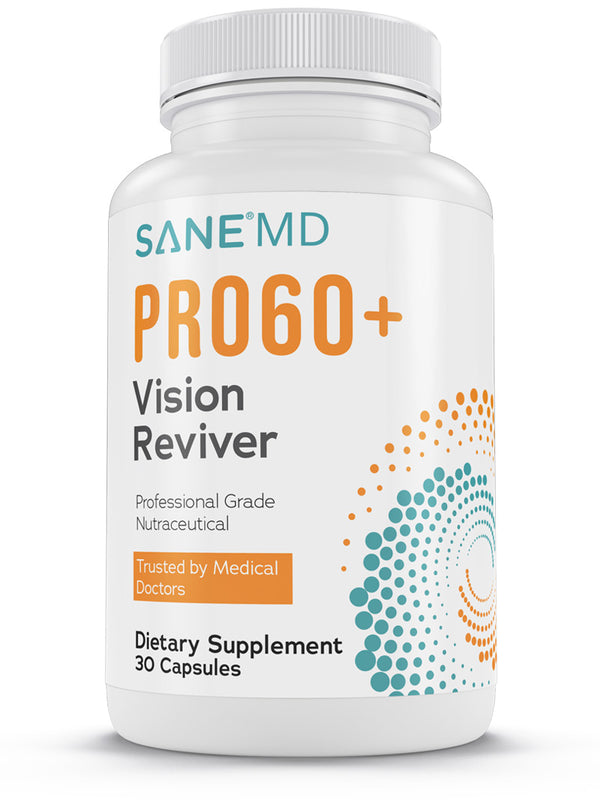Gluten intolerance and celiac disease are often confused with each other because of their similar symptoms. Gluten intolerance, or non-celiac gluten sensitivity, is a reaction to gluten, a protein in wheat, barley, and rye, without the autoimmune response of celiac disease.
Click here to learn more about Viscera-3™ and to place your order noq while supplies last!
Celiac disease is an autoimmune disease that occurs when gluten is eaten, and the small intestine is damaged.
A leaky gut, also known as increased intestinal permeability, occurs when the lining of the small intestine becomes damaged, allowing undigested food particles, toxins, and bacteria to pass through the intestinal wall and into the bloodstream.
It’s important to understand the connections between these conditions because they can impact each other. For example, gluten can make a leaky gut worse, and a leaky gut can make the symptoms of both gluten intolerance and celiac disease worse.
Managing these connections can lead to better health.

Gluten Intolerance
Gluten intolerance, or non-celiac gluten sensitivity (NCGS) is when people experience symptoms from eating gluten but don’t have celiac disease or a wheat allergy. Unlike celiac disease, gluten intolerance doesn’t cause an autoimmune response or damage to the small intestine.
Symptoms of gluten intolerance include digestive symptoms like bloating, abdominal pain, diarrhea, or constipation, as well as headaches, fatigue, joint pain, and a foggy mind. These symptoms can overlap with celiac disease, but the key difference is the absence of intestinal damage and autoimmune markers in gluten intolerance.
Celiac disease presents with more severe gastrointestinal symptoms and malabsorption issues and can lead to long-term complications like anemia, osteoporosis, and neurological disorders if left untreated.
The prevalence of gluten intolerance is hard to determine because of its nonspecific symptoms and lack of definitive diagnostic tests. However, it’s estimated to affect a large portion of the population, with some studies suggesting up to 6% of people may have NCGS.
Gluten intolerance can affect anyone but is more common in adults, particularly women. Understanding and recognizing gluten intolerance is key to providing the right dietary advice and improving the quality of life for those affected.
What is Celiac Disease?
Celiac disease is a chronic autoimmune disease in which ingested gluten damages the small intestine.
Gluten, a protein in wheat, barley, and rye, triggers an immune response in people with celiac disease. It also causes inflammation and damage to the intestinal villi, small finger-like projections that absorb nutrients from food.
Symptoms and Health Complications
The symptoms of celiac disease can vary greatly. They can include gastrointestinal issues like diarrhea, constipation, bloating, and abdominal pain, as well as non-GI symptoms like anemia, fatigue, joint pain, skin rashes (dermatitis herpetiformis), and neurological problems. Celiac disease is also associated with other autoimmune conditions, including inflammatory bowel disease (IBD).
If left untreated, celiac disease can lead to serious health complications like malnutrition, osteoporosis, infertility and an increased risk of certain cancers like lymphoma.
What is Leaky Gut?
Leaky gut syndrome, also known as increased intestinal permeability, is when the lining of the small intestine becomes damaged.
This allows undigested food particles, toxins, and pathogens to pass through the intestinal wall and into the bloodstream.
As a result, this can trigger an immune response and potentially cause a range of health problems.
How the Intestinal Barrier Works Normally
Under normal conditions, the intestinal barrier is made up of tightly packed cells called enterocytes that regulate the absorption of nutrients and prevent harmful substances from entering the bloodstream.
The tight junctions between these cells act as gatekeepers, allowing nutrients to pass through and blocking larger, potentially harmful molecules.
Causes of Leaky Gut
Several things can contribute to a leaky gut:
-
Diet: High consumption of processed foods, sugar, and alcohol can damage the gut lining.
-
Stress: Chronic stress can weaken the immune system and gut.
-
Medications: Nonsteroidal anti-inflammatory drugs (NSAIDs), antibiotics, and other medications can damage the intestinal lining.
-
Infections: Bacterial, viral, and parasitic infections can compromise the gut barrier.
-
Toxins: Exposure to environmental toxins and chemicals can, too.
Symptoms and Health Effects of Leaky Gut
Leaky gut symptoms can show up in many ways, including digestive issues like bloating, gas, diarrhea, and abdominal pain. The symptoms of leaky gut can overlap with those of irritable bowel syndrome, including increased gas, bloating, constipation/diarrhea, and pain.
Beyond the gut, it can lead to systemic inflammation and contribute to conditions like autoimmune diseases, allergies, skin problems, and even mental health issues like anxiety and depression.
The link between leaky gut and these diverse health effects shows how important it is to keep the intestinal barrier healthy.
Gluten Intolerance and Leaky Gut
Gluten, a protein found in wheat, barley, and rye, can damage gut permeability, especially in those with gluten intolerance.
When gluten is eaten, it can release zonulin, a protein that regulates the tight junctions between the cells of the intestinal lining.
Higher zonulin levels can loosen these tight junctions and make the gut lining more permeable.
Gluten Intolerance and Celiac Disease
A strict gluten-free diet is key for those with gluten intolerance or celiac disease.
This means eliminating all sources of gluten, including wheat, barley, rye, and any products made from these grains.
Eating even small amounts of gluten can trigger symptoms and damage the gut in those with celiac disease.
A gluten-free diet reduces inflammation, heals the gut lining, and prevents further complications.
Lifestyle Changes and Tips for Cross-Contamination
Cross-contamination is key to managing gluten intolerance and celiac disease.
This means being mindful of food preparation and storage. Tips:
-
Using separate cooking utensils, pots, and pans for gluten-free meals.
-
Designating a gluten-free area in the kitchen for food prep.
-
Reading labels to find hidden sources of gluten.
-
Informing restaurants and friends of dietary restrictions to ensure safe eating environments.
-
Being mindful of nonfood items like medications, supplements, and personal care products that may contain gluten.
Tracking and Managing Symptoms
Tracking and symptom management are key for those with gluten intolerance and celiac disease. Keeping a food diary can help you identify accidental gluten exposure and track symptoms.
Follow up with healthcare providers regularly to monitor health and nutrition.
Blood tests can check for ongoing intestinal inflammation and nutrient deficiencies to ensure the diet is working.
Stay informed about new research and gluten-free products to support long-term management and quality of life.
By implementing these dietary changes, nutritional strategies, lifestyle changes, and symptom management techniques, those with gluten intolerance and celiac disease can manage their condition and be healthy.
Leaky Gut
A diet of whole, unprocessed foods is key to healing a leaky gut. Focus on foods that support gut health.
-
Fruits and Vegetables: Rich in fiber, vitamins, and antioxidants, they feed the gut microbiome.
-
Fermented Foods: Yogurt, kefir, sauerkraut, kimchi, and kombucha provide beneficial probiotics.
-
Healthy Fats: Omega 3 fatty acids in fish, flaxseeds, and chia seeds can reduce inflammation.
-
Bone Broth: Contains collagen and amino acids that support gut lining repair.
Lifestyle: Stress, Exercise, Sleep
Lifestyle changes are just as important in healing a leaky gut.
-
Stress Management: Chronic stress can damage gut health. Mindfulness, meditation, and yoga can help manage stress.
-
Exercise: Regular physical activity improves overall health and reduces inflammation.
-
Sleep: Quality sleep is key to gut health. Aim for 7-9 hours of restful sleep per night.
By eating a gut-friendly diet, managing stress, exercising regularly, and sleeping well, you can support the healing of a leaky gut and overall health.
Celiac Disease and Leaky Gut
Celiac disease causes a leaky gut.
When someone with celiac disease eats gluten, their immune system attacks the lining of the small intestine.
This autoimmune response causes chronic inflammation and damage to the intestinal villi, which are responsible for nutrient absorption and gut barrier integrity.
Research on Celiac Disease and Leaky Gut
Research shows a clear link between celiac disease and increased intestinal permeability.
Research shows that those with celiac disease have higher levels of zonulin, a protein that regulates tight junctions in the intestinal lining.
Higher zonulin levels equal increased gut permeability, so there is a clear link between celiac disease and a leaky gut.
Many patients see a significant reduction in zonulin levels and improvement in gut barrier function when they go gluten-free.
Long-Term Health Consequences if Untreated
If celiac disease and the leaky gut are left untreated, the long-term health consequences can be severe.
Chronic inflammation and nutrient malabsorption can lead to osteoporosis, infertility, neurological disorders, and an increased risk of certain cancers, like intestinal lymphoma.
The ongoing immune response can also trigger other autoimmune conditions and further compromise overall health.
Early diagnosis and a strict gluten-free diet are key to preventing these severe outcomes and promoting gut healing and overall well-being.
FAQs on Gluten Intolerance, Celiac Disease, and Leaky Gut Syndrome
1. What is the difference between gluten intolerance and celiac disease?
Gluten intolerance, also known as non-celiac gluten sensitivity, can cause symptoms similar to celiac disease but without the autoimmune response or intestinal damage of celiac disease.
Celiac disease is an autoimmune disorder where eating gluten causes the immune system to attack the small intestine, damaging it and causing malabsorption.
2. Can you have both gluten intolerance and celiac disease?
Yes, you can have symptoms of gluten intolerance with celiac disease, but they are different conditions.
Celiac disease requires a genetic predisposition and an autoimmune response; gluten intolerance doesn’t.
3. How long does it take to heal a leaky gut?
Healing a leaky gut can take weeks to months, depending on the severity and individual factors.
Eating a gut-friendly diet, managing stress, and taking supplements can speed up the healing process.
4. Is a gluten-free diet good for everyone?
A gluten-free diet is necessary for those with celiac disease or gluten intolerance. It’s not beneficial for others and can lead to nutritional deficiencies if not managed properly.
Always consult a healthcare professional before making any changes.
Summary
Gluten intolerance, celiac disease, and leaky gut are all connected. You can improve your health and well-being by going gluten-free, addressing nutritional needs, making lifestyle changes, and seeking professional advice.
Remember, early diagnosis and management are key to preventing long-term consequences.
Share this with your friends and family on social media and by email to help raise awareness and support those who are affected. Your support can make a big difference in their journey to wellness.
Get Viscera-3™for Better Gut Health
Try Viscera-3™,the ultimate gut health supplement. Viscera-3™is scientifically designed to support digestive health, improve gut permeability, and promote overall well-being. Don’t wait to feel better; order Viscera-3™now and start your journey to a better you.
Click here to learn more about Viscera-3™ and to place your order now while supplies last































